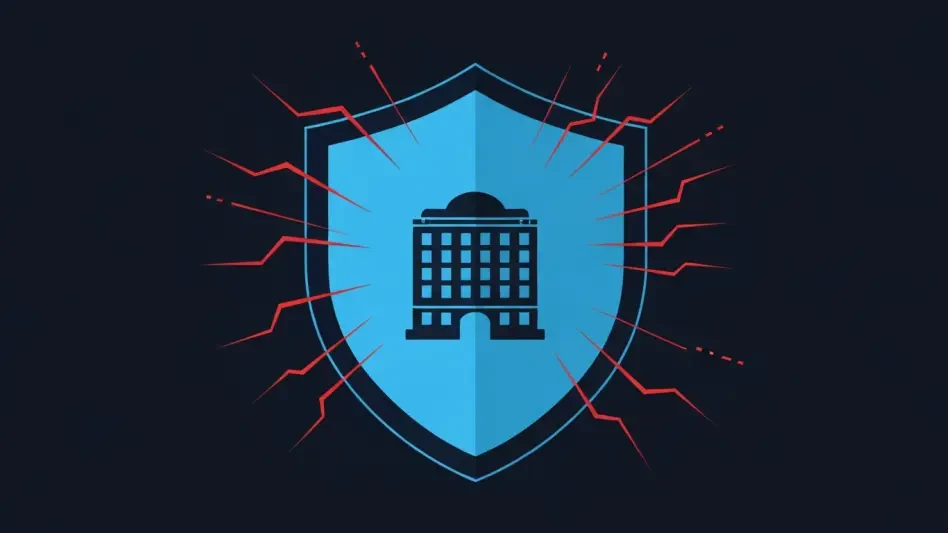Operation RapTor represents a pivotal and comprehensive initiative aimed at dismantling illicit activities pervasive on the darknet, where the sale of dangerous substances like fentanyl flourishes under the cover of anonymity. This dark corner of the internet, unindexed by standard search engines and requiring specific software for access, has become a preferred marketplace for drug traffickers. Synthetic opioids such as fentanyl, known for their lethal potency, have exacerbated the ongoing opioid crisis by leading to numerous overdose deaths, particularly in the United States. Operation RapTor marks a significant step forward in confronting these challenges, centering on the eradication of drug trafficking and reinforcing international cooperative efforts to combat these dangers.
A Multi-Continental Deployment
Collaborative Efforts Across Continents
The execution of Operation RapTor has brought together a host of law enforcement agencies from multiple continents in a concerted effort to curtail darknet drug trading. With over 270 arrests, encompassing vendors, administrators, and buyers of illegal drugs, this large-scale operation has demonstrated its success in capturing a wide spectrum of participants involved in these illicit activities. Law enforcement from North America, Europe, South America, and Asia participated, exemplifying the universal acknowledgment of the threat posed by darknet drug trafficking. The operation’s magnitude underscores the collective urgency to address the distribution of life-threatening substances like fentanyl in the digital realm.
The successful coordination among nations highlights the intrinsic challenges and breakthroughs achieved in cross-border law enforcement. Agencies joined forces, sharing intelligence and resources to combat this pervasive issue. The international cooperation not only expands the operational capacity but also reinforces trust and collaboration among participating countries. This unity is crucial for confronting sophisticated criminal operations that have taken advantage of the darknet’s global reach and anonymity. Such collaborations extend to both strategic planning and tactical execution, ensuring a comprehensive approach to tracking and apprehending offenders.
Seizing the Tools of Illegal Trade
Key outcomes from Operation RapTor include not just the arrest of individuals involved but also substantial seizures of narcotics, firearms, and cryptocurrencies. Over 144 kilograms of fentanyl-laced drugs were confiscated, underlining the operation’s focus on eliminating these substances from circulation. The seizure of 180 firearms further emphasizes the associated risks and the overlapping nature of digital drug trafficking and wider criminal activities. Cryptocurrency, a favorite among such illicit networks for its perceived anonymity, was also recovered in significant amounts, disrupting the financial operations of these criminal enterprises.
The impact of confiscating these resources extends beyond immediate arrests, disrupting the infrastructure that supports continued illegal operations. By intercepting financial flows through cryptocurrency and disabling access to firearms and drugs, Operation RapTor effectively hampers the ability of these networks to operate. These actions are vital in sending a strong message to potential offenders about the reach and resolve of international law enforcement agencies. The seizures highlight the importance of not only targeting the individuals directly involved but also dismantling the supporting systems that facilitate the ongoing threat of darknet drug trafficking.
Origins and Strategy of Operation RapTor
The Genesis of a Coordinated Effort
The roots of Operation RapTor can be traced back to the formation of JCODE in 2018 by the Federal Bureau of Investigation (FBI), marking a proactive stance against the sale and distribution of opioids via the darknet. JCODE plays a pivotal role in not only providing strategic direction for these operations but also in ensuring seamless coordination across international boundaries. Since its inception, JCODE has been instrumental in uniting a wide array of resources and expertise focused on targeting the opioid crisis at its most clandestine levels. This entity empowers law enforcement to tackle the intricate web of interactions underpinning darknet transactions.
JCODE’s approach involves a multifaceted strategy that blends advanced technology with old-school policing techniques. By combining data analysis, cyber reconnaissance, and conventional investigative methods, JCODE identifies and dismantles these networks systematically. Each operation is a carefully orchestrated event encompassing detailed planning and precise execution. Efficiency in international coordination, from information sharing to operational logistics, reflects JCODE’s foundational purpose. This merging of expertise and resources highlights the adaptability and persistence of agencies committed to tackling the evolving threats posed by darknet activities.
Technological Countermeasures and Market Analysis
One of the success factors of Operation RapTor is its ability to navigate and understand the technological landscape that supports darknet operations. FBI Director Kash Patel noted that these online markets operate like mainstream e-commerce platforms, complete with customer reviews and promotions to lure buyers into purchasing illegal substances. However, beneath the veneer of legitimacy lies a deeply entrenched ecosystem making the detection and dismantling of such networks particularly challenging. This sophisticated mimicry of legitimate online business practices complicates the task of enforcement agencies striving to remove these illicit services from the digital sphere.
Advanced technological tools and cybersecurity measures form the backbone of efforts to target these networks. Data analytics and artificial intelligence were utilized to monitor, identify, and track the entities involved in illegal activities. Continuous surveillance and profiling enable agencies to disrupt these operations, providing critical insights into emerging patterns and trends within these clandestine marketplaces. By studying transaction trails and market dynamics, law enforcement agencies fortify their understanding and enhance their ability to predict and prevent future darknet activities. Such tools are essential to countering the constantly advancing strategies of these shadow markets.
Operational Challenges and Achievements
Logistics and Distribution on the Darknet
Vendors operating on the darknet are markedly sophisticated in their methods, using the anonymity provided by the platform to conduct transactions on a global scale. This capability allows them to invisibly distribute drugs worldwide without traditional face-to-face exchanges. One immense challenge for law enforcement is penetrating these dispersed and technologically protected networks to intercept illegal shipments. The absence of direct interactions between buyers and sellers, facilitated by intricate logistical planning, complicates efforts to track and disrupt the flow of harmful substances across international borders.
Despite these hurdles, Operation RapTor’s success lies in its ability to understand and act on these logistical complexities. Part of the strategy involved closely monitoring and analyzing shipping patterns, cryptocurrencies, and digital footprints to trace the sophisticated web of actions that constitute these illicit networks. This meticulous attention to detail not only aids in counter operations but also equips agencies with the knowledge needed for future crime prevention measures. By infiltrating and dismantling these supply chains, law enforcement demonstrates the efficacy of a comprehensive and persistent approach in countering these sophisticated criminal enterprises.
Awareness and Education Initiatives
Understanding and disrupting the logistical framework of darknet vendors extends to educating the potential buyers on the risks they face. Many of these individuals might not comprehend the true origins or potency of the drugs they purchase, leading to life-threatening situations. Katie Brenden, a JCODE analyst, stressed the importance of raising awareness about the dangers associated with these transactions. Part of the strategy involves disseminating information to the public about the deceptive simplicity and perilous nature of buying unseen drugs online, thereby focusing on prevention alongside enforcement.
Public education campaigns form an integral component of JCODE’s mission to mitigate risks associated with darknet activities. These initiatives aim to enlighten potential users about the dangers of purchasing drugs on the darknet, thereby reducing demand. By fostering a better understanding of the threats posed by misinformation and the potential consequences of these purchases, law enforcement can help alter consumer behavior. This educational angle, combined with rigorous enforcement, serves as a dual tactic in addressing the multifaceted challenge posed by illegal darknet drug markets.
Broader Implications and Future Directions
Strategic Collaboration and International Unity
Operation RapTor illustrates a major success in the ongoing fight against the illicit trade of synthetic opioids and other dangerous substances facilitated through the darknet. The operation’s success showcases the critical necessity of strategic partnerships across different jurisdictions and continents, effectively highlighting the global nature of the problem. The operation required input from numerous agencies, including the Drug Enforcement Administration (DEA), Food and Drug Administration (FDA), and international partners like Europol and Eurojust. Such collaborative efforts are emblematic of what can be achieved when countries pool their resources and knowledge toward a shared goal.
The strength of these collaborations lies in the ability to address complex, cross-border challenges through a unified approach. The relationship between federal, state, and international agencies fosters a robust network capable of dynamic responses to varying threats. This comprehensive network of partnerships ensures not only the success of operations like RapTor but also the sustainability of efforts in the future. As criminal tactics evolve, the unity and adaptability of these collaborations will underpin continued progress in safeguarding communities from the scourge of illicit drugs.
Ongoing Challenges and Future Prospects
Operation RapTor signifies a critical and comprehensive effort to dismantle illegal activities rampant on the darknet. This hidden segment of the internet isn’t indexed by standard search engines and demands specialized software for access, making it a haven for drug traffickers. The sale of dangerous substances, particularly synthetic opioids like fentanyl, thrives in this obscured marketplace. Fentanyl’s extreme potency has significantly deepened the ongoing opioid crisis, contributing to a multitude of overdose deaths, especially within the United States. Operation RapTor takes a notable step in tackling these problems by focusing on eradicating drug trafficking networks. It emphasizes the importance of international cooperation to effectively combat these threats. By targeting the root of darknet drug sales, it aims to reduce the widespread availability of such perilous substances and curb the devastating impact of opioid-related fatalities, reinforcing global efforts to address these critical challenges.








